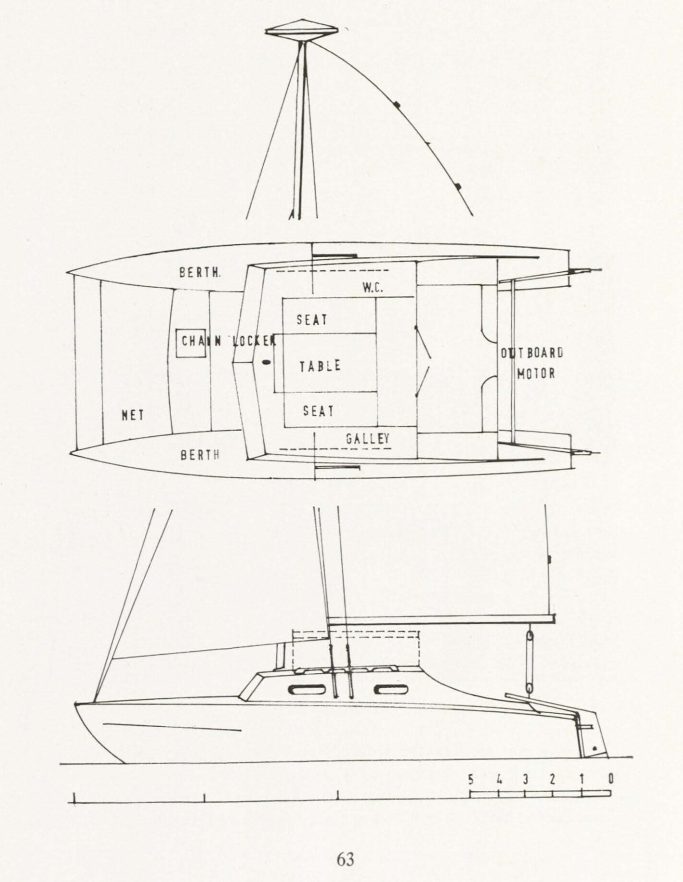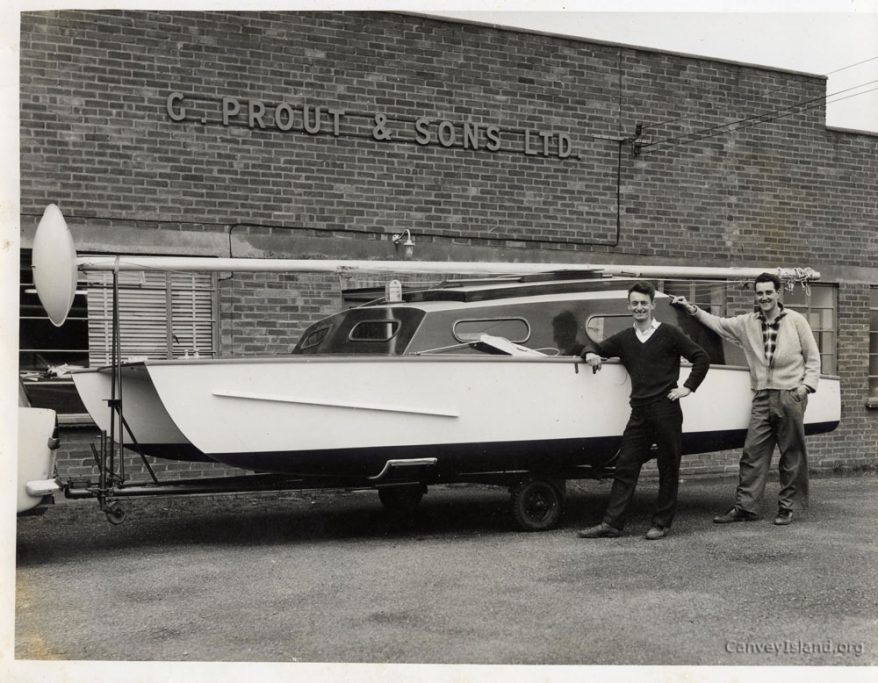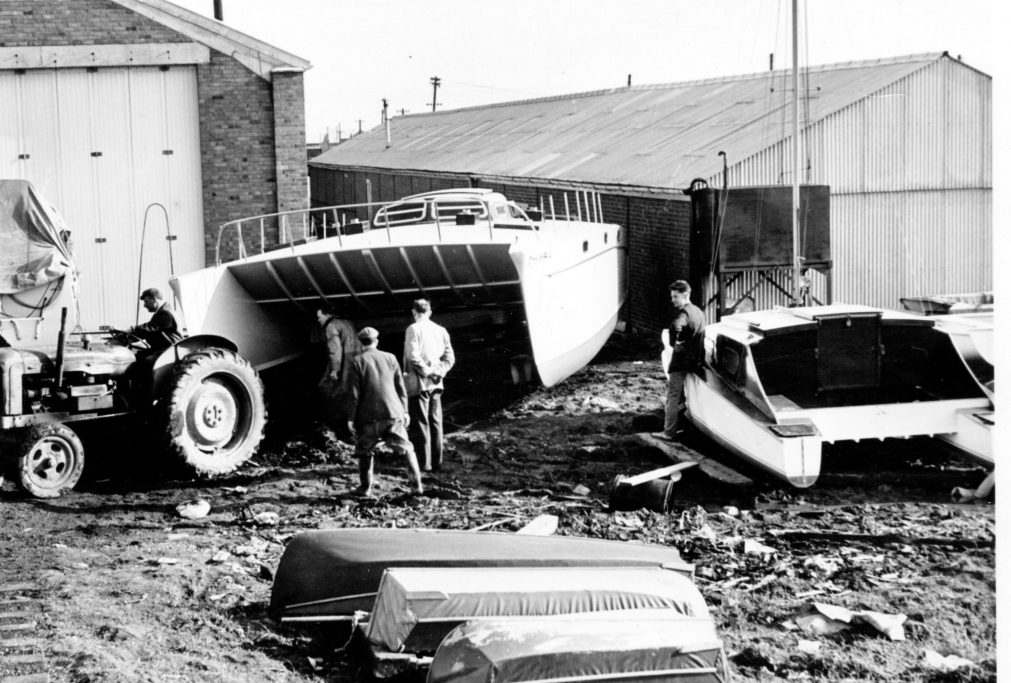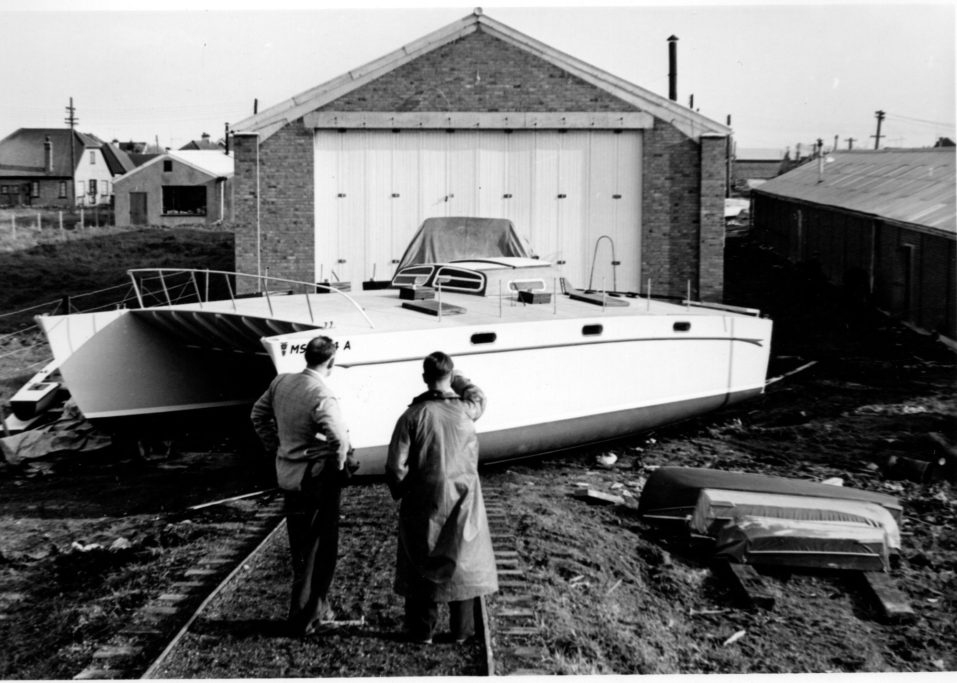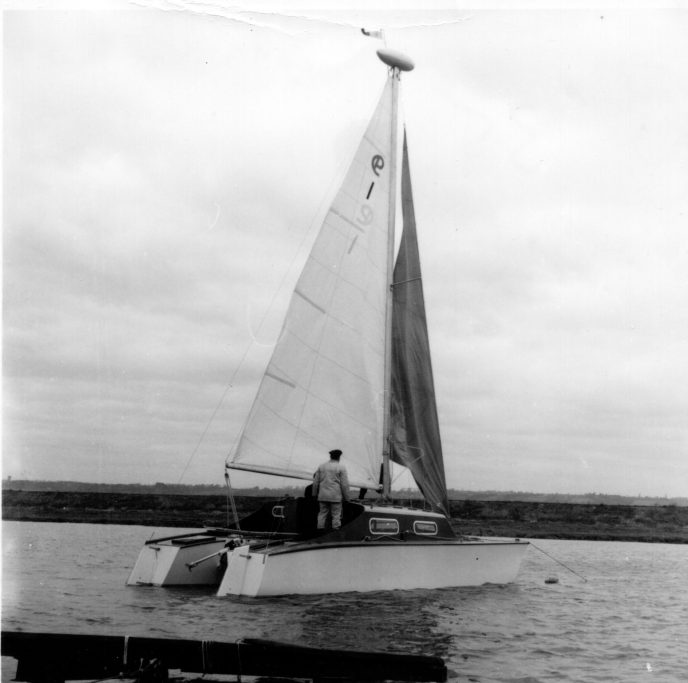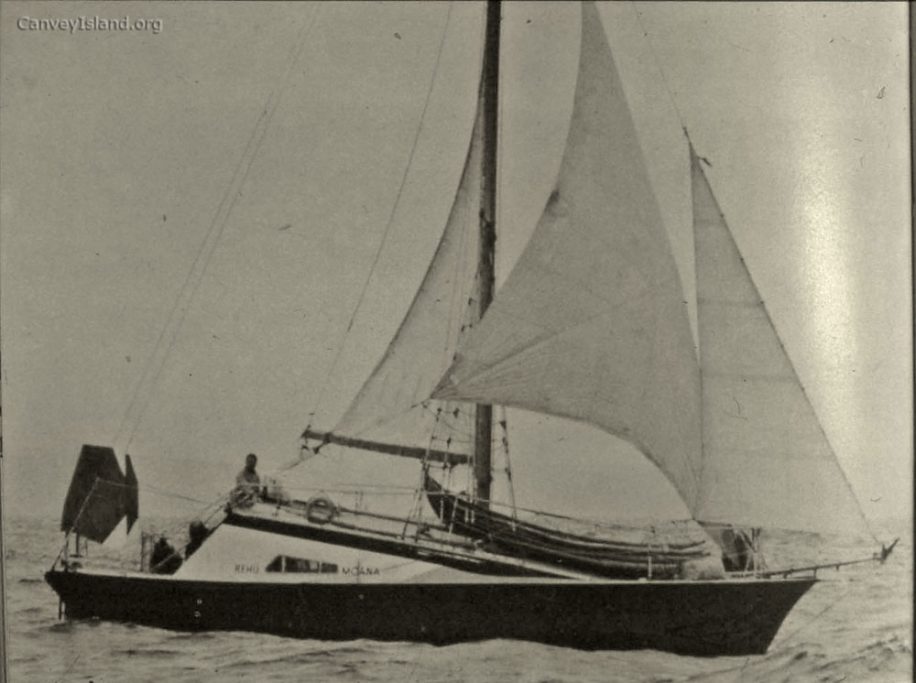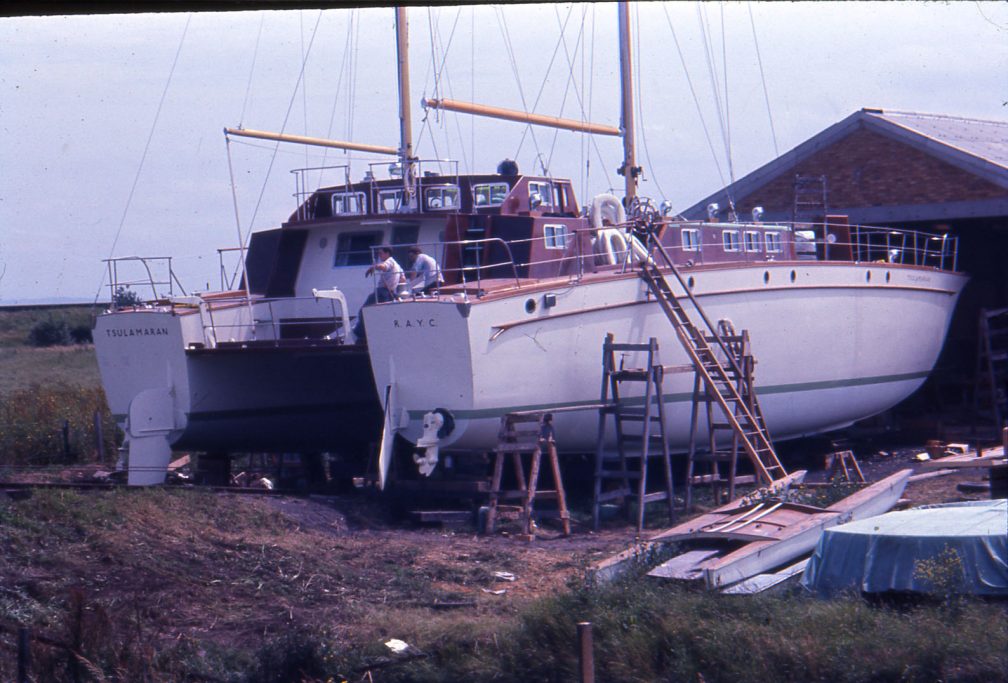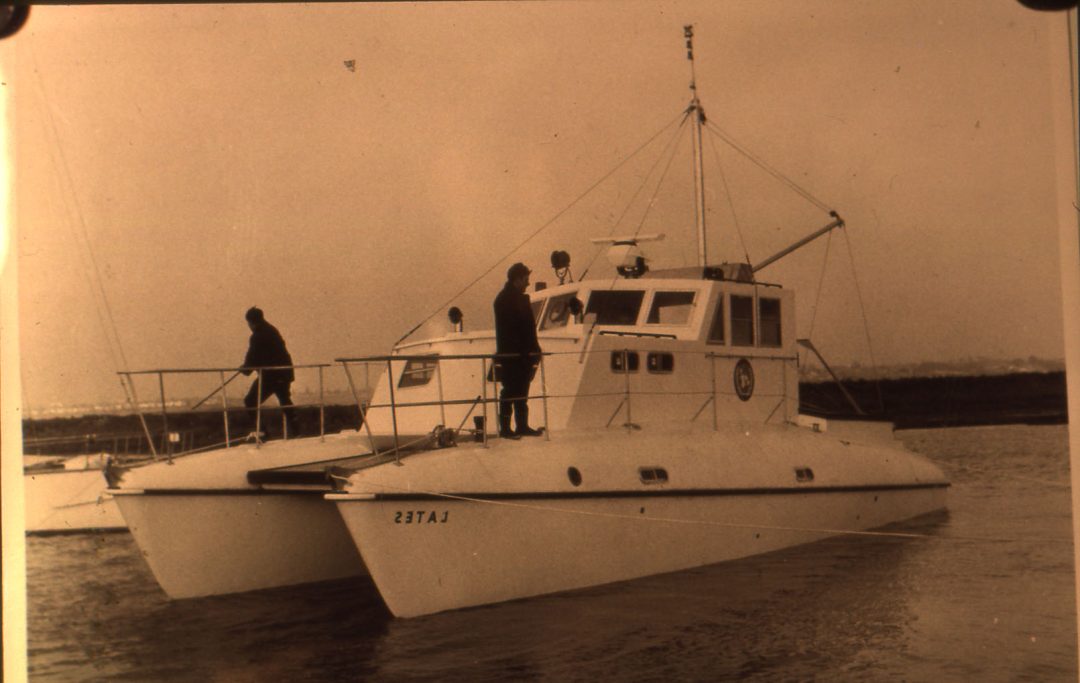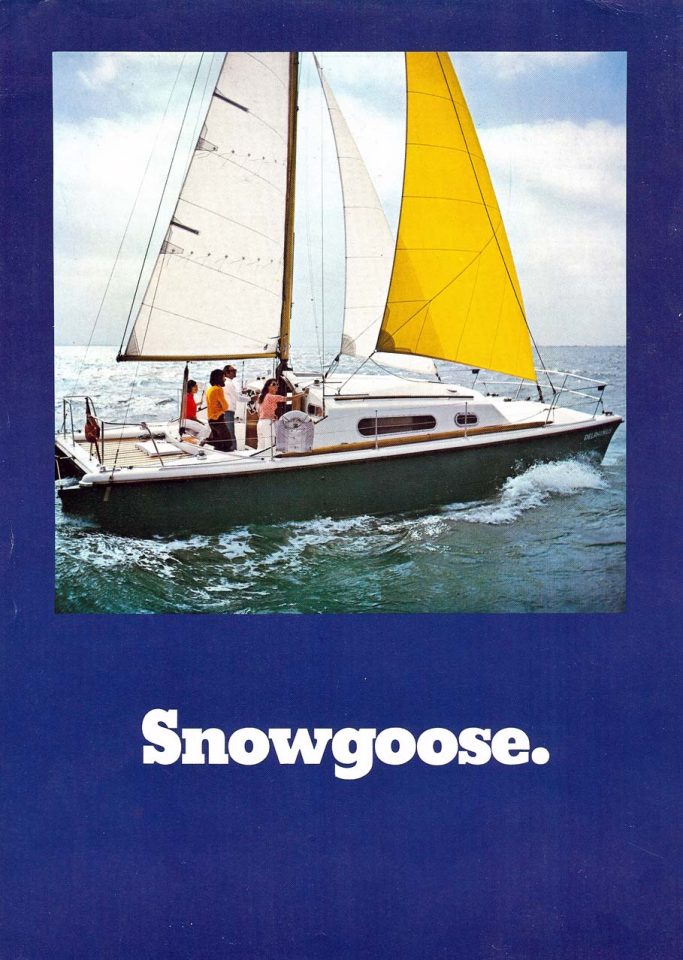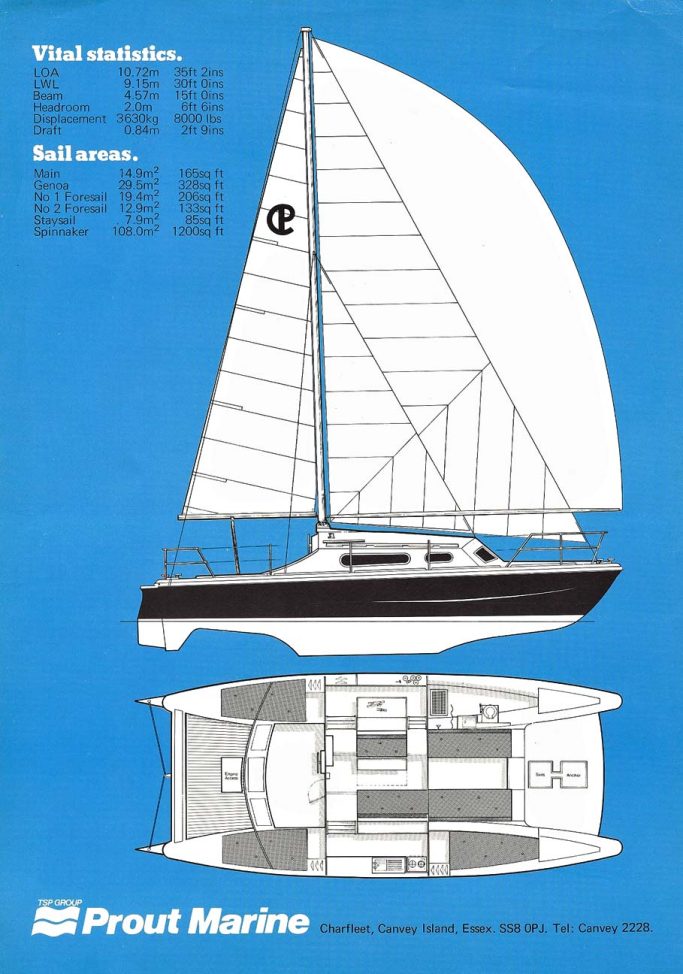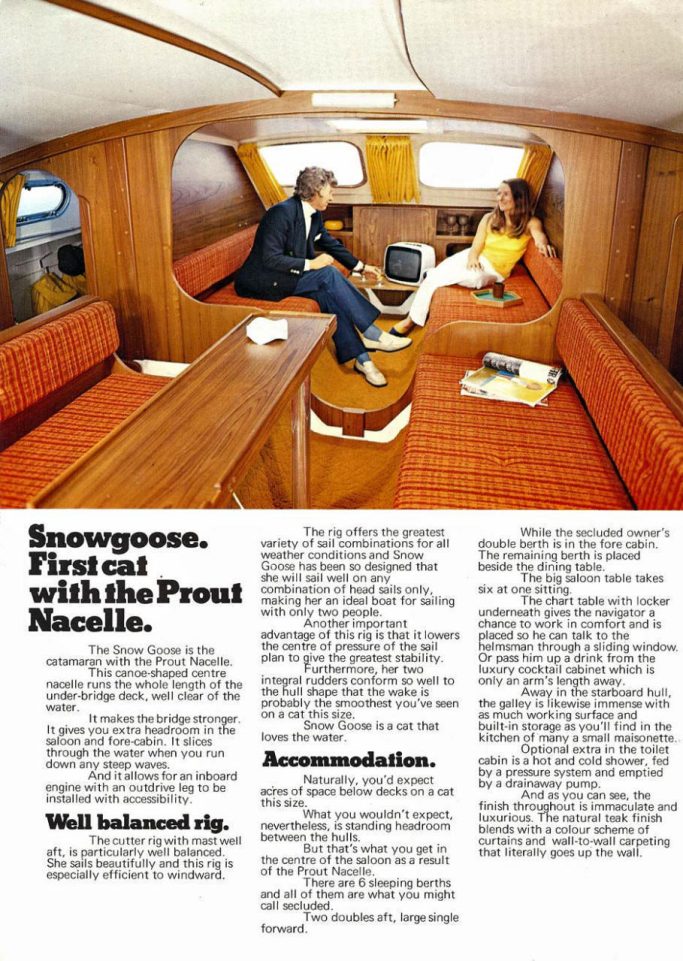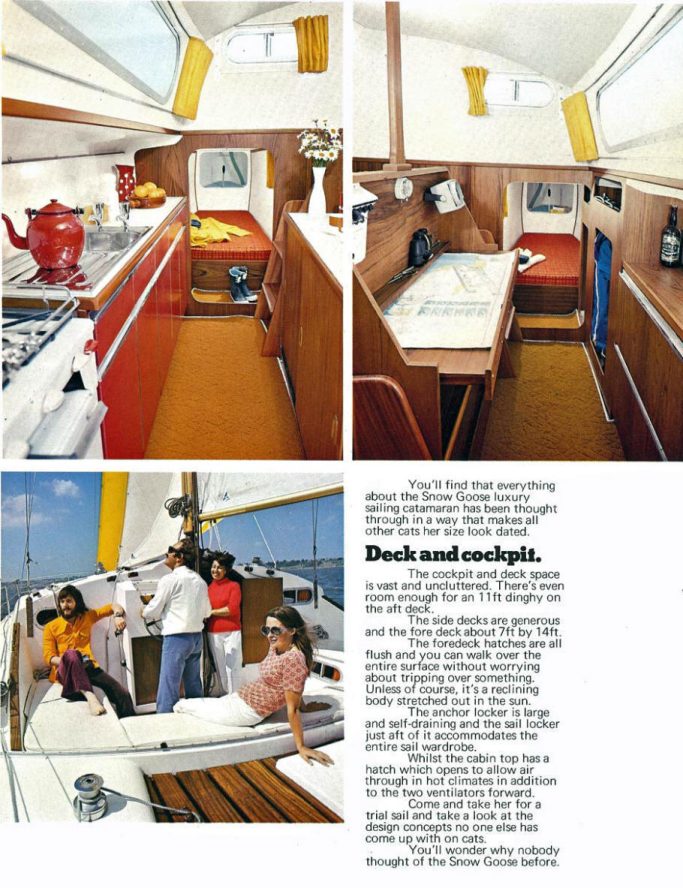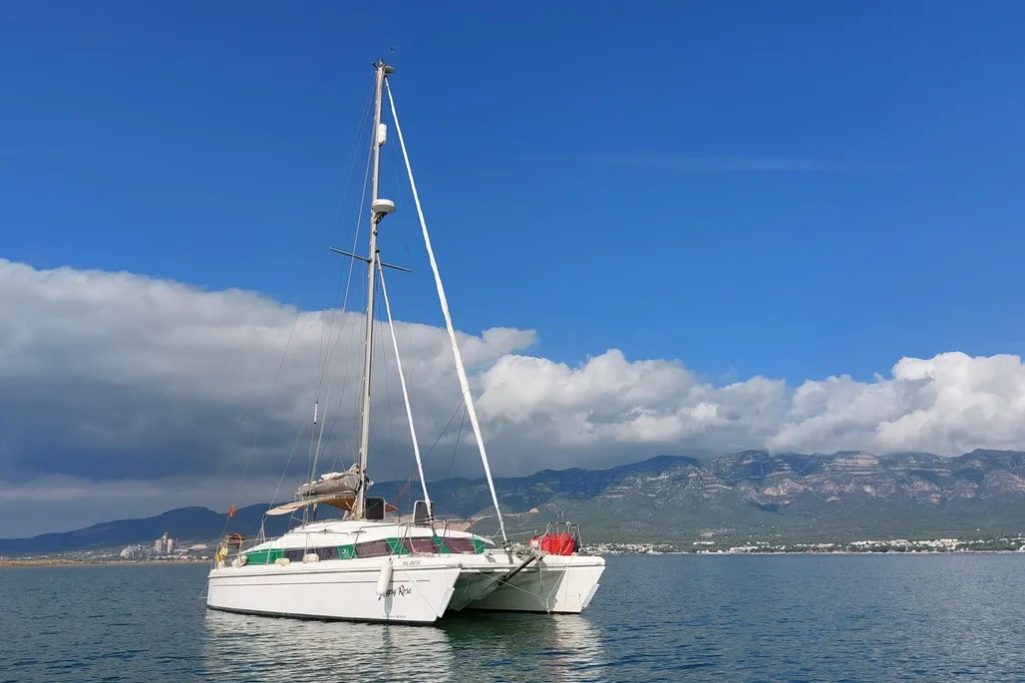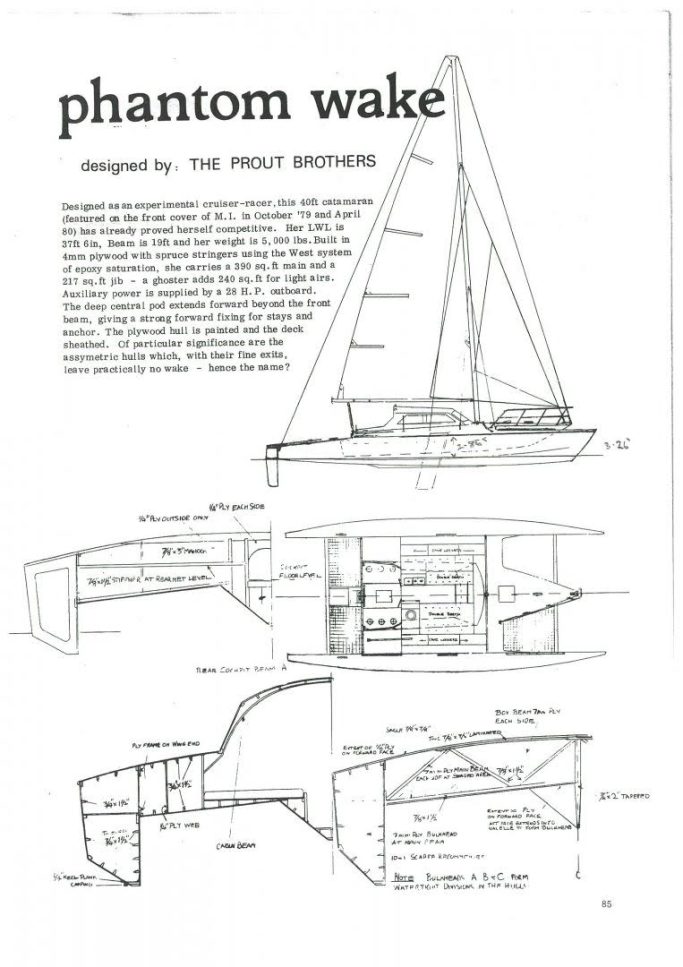The Prout Brothers
In 1947 Roland and Francis Prout in Canvey Island, Essex, UK were Olympic competing canoeists, and they joined two of their canoes together creating a catamaran. They continued the project with a second in 1949 but in 1954 they designed Shearwater 1 an 18-foot day sailor. It was very successful, so they developed it into Shearwater II in 1959. After testing this prototype, they shortened the hulls to 16.6 feet and started selling kits in wood in 1963. By 1964 a grp version was launched too. Others joined the process such as the Cunningham Brothers with their Yvonne Cat in Australia, Bob Harris with Ocelot in 1957 in America and Bill O'Brien developed Jump ahead in 1955.
Cruising Catamarans were appearing as well as the performance day boats. Roland Prout corresponded with Woody Brown and Hugo Myers before designing his first in 1959 called Flamingo for Don Robertson. Don had experimented with a day sailor and l found Flamingo a successful cruising catamaran. In 1956 Prout’s built him another 36 footer called Snowgoose. Robertson went on to successfully sail Snowgoose an improved Prout catamaran in the Crystal Trophy, Round the island and Round Britain Races winning the latter in 1970 ahead of Weld's 40 foot Kelsall tri-Trumpeter. The Prouts produced a 19-foot cruising catamaran based on the Shearwater hulls and then developed a range of small cruising catamarans built in moulded grp, the Ranger 27 and the Ranger 31. Along the way they built a 40-foot catamaran Rheu Moana based on their hulls to the waterline with the remaining hulls and bridge deck designed by Colin Mudie for Dr David Lewis who took her on disastrous voyage to Iceland when the strange wishbone mast designed by Mudie broke. Rerigged with a standard Bermudan cutter rig Lewis took her on the 1964 OSTAR then sailed around the World with his wife and children and a very attractive young lady navigator (almost in the Wharram tradition!) and rumour was that he had one woman in one hull and one in the other. Certainly, his marriage did not survive the trip. But he had made the first circumnavigation by multihull. The yacht was much the better for the removal of the ballasted drop keels designed by Mude. Lewis went on to research and write the first academic study of Polynesian navigation. Sadly, before going to the South Seas Lewis had sold the catamaran - to fund his divorce perhaps? Rhu Moana passed through other owners until 1979 when she was restored in Cornwall before being wrecked in a storm in 1982. In 1966 Prouts designed and built what was claimed to be the biggest catamaran in the World a 77-foot motor sailor called Tsulamaran. However, after many cruisers that had sailed extensively they put an all grp 34-foot catamaran called Snowgoose into production in 1971. The hulls were outsourced to Thames Marine also at Canvey Island. This was a very unusual design with a large nacelle running the length of the full length bridgedeck keeping the boat very low in freeboard and height. The mast was stepped aft with a so called “Mins'sl" and large genoa jib.
Nacelles under the bridgedeck have been used in other designs and Kelsall and Pat Patterson in the UK used them. In Kelsall's case he put the centreboard or dagger board and rudder on the nacelle on some catamaran designs.
A whole series developed firstly the 35-foot version (it was initially called the 34 then the 35 the difference being that the rudders were included in the LOA) then the extended Prout 37 followed by a Snowgoose Elite 37 with extended hulls and greater accommodation. There were 26- and 31-foot versions of the Prout Catamaran. In the 60's they developed a Prout Ranger 45 which had "Whaleback" hulls and spawned many different versions from the Ocean Ranger to the ultimate 50-foot Quasar. After the retirement of Roland and Francis Robert underwood was the MD and the business which had won awards for export and was reputed around the World fell on hard times. Notwithstanding Robert Underwood's brilliant sales skills and the updating of the designs with the Event 34, a superb 45 (and a 46) foot design and continued the style of the larger boat in a more affordable guise of the Prout 38, the company got into financial trouble. In 2000 it was sold to a Canadian boatbuilder Quest. In 2001 the company went into receivership and a subsidiary of Quest bought the ongoing business. In 2002 the business went ito liquidation shutting the door for good. Most of the moulds apparently went out to South Africa where some more boats were built. The Prout 38 lived on as part of Underwood's new company Broardblue. A company in Hong Kong sold Prout 45's under the Prout International brand via yet another subsidiary of Quest. They sold boats built in Thailand and later in China but had ceased trading by 2013. A sad end to a great British brand that sold thousands of boats that can still be found everywhere. The number of ocean voyages and circumnavigations by Prout catamarans is almost too many to count. Today they seem rather dated and the World has not adopted the low bridgedeck nacelle (also favoured by Pat Patterson) or the Prout rig as catamarans now generally feature high freeboard, and big wide hulls lightly built in higher tech construction with palatial accommodation and big high roach mainsails but there is no denying the achievements of the Prout Brothers and the boats they built.


